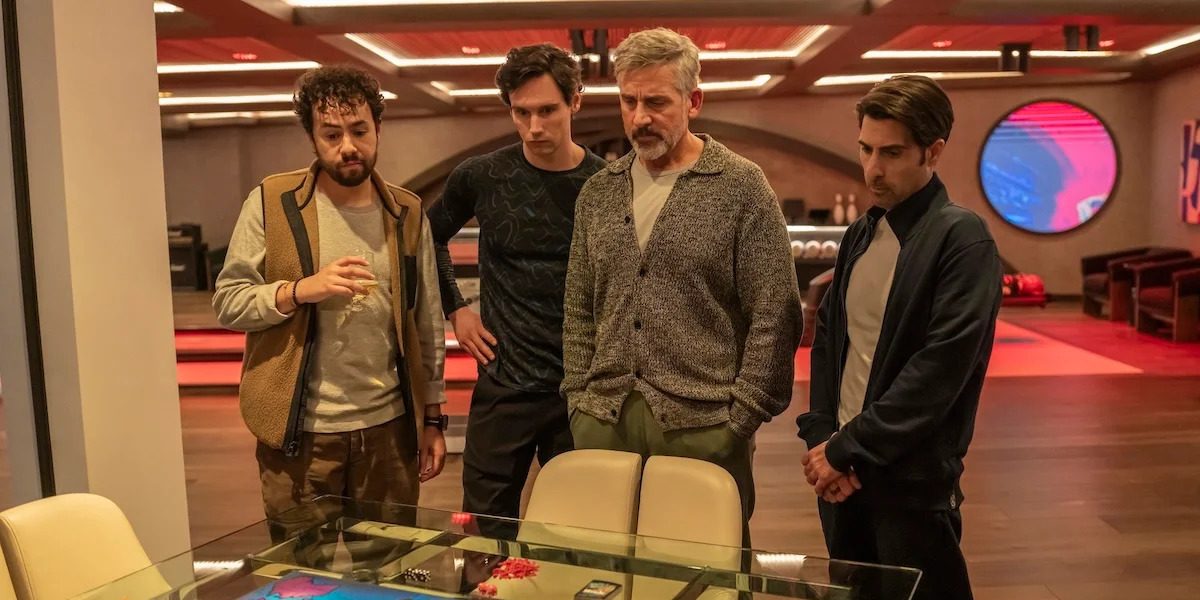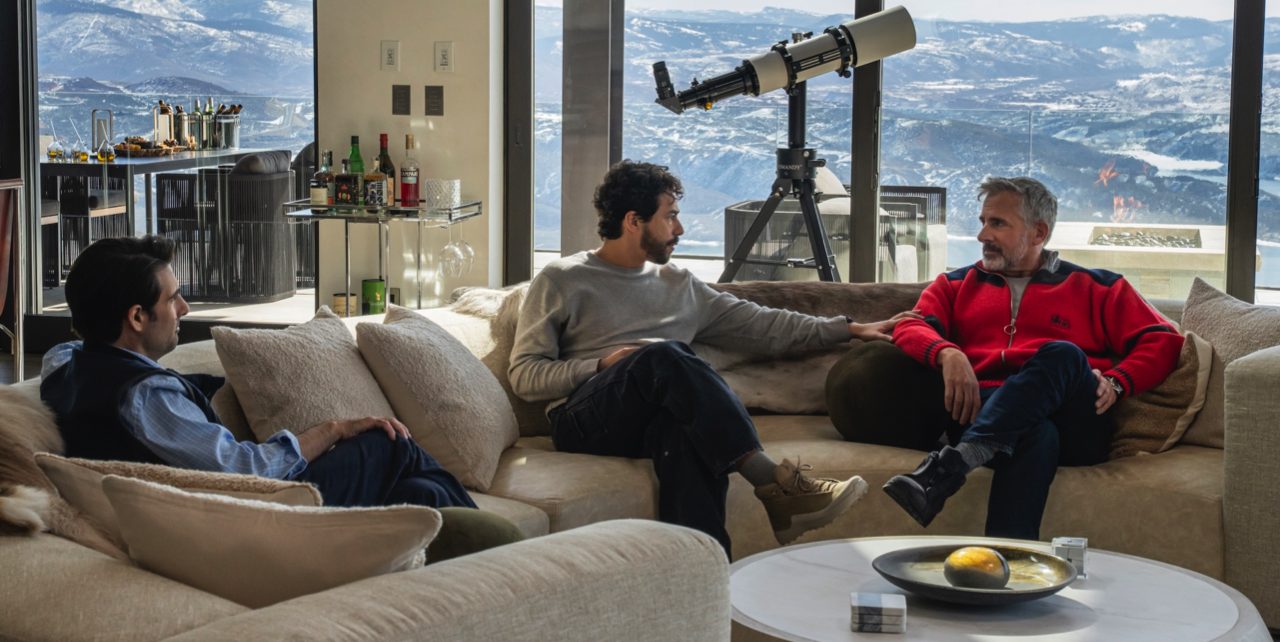Directed by Jesse Armstrong, HBO’s ‘Mountainhead‘ tells the story of four tech billionaire friends – Venis, Jeff, Randall, and Hugo – who get together for a stayover at Hugo’s titular estate in the snow-capped mountains, only for it to be disrupted by the chaos around the world. As they work through their personal issues with one another in a bickering, nonchalant tone, they must figure out a way to defuse the international incidents stemming from a rogue AI feature implemented by Venis on his social media app. It leads to a series of amusing conversations that also touch upon growing fears around the world of technology and a race to the bottom with enormous unintended consequences. Thus, the comedy-drama film provides a glimpse into contemporary concerns while also showcasing the detached world of wealth from a satirical lens.
Mountainhead Delves Into the Rising Anxieties Surrounding AI Technology
While ‘Mountainhead’ is largely a fictional tale conceived by writer-director Jesse Armstrong, it draws inspiration from the world of technology, especially the companies and leading figures who have a huge hand in deciding the next step of innovation. When crafting his four central characters, Armstrong took cues from global tech leaders such as Elon Musk, Mark Zuckerberg, and Sam Altman, among many others. He researched their profiles and achievements through several reports, interviews, and books published on them throughout the years. As such, he formulated an idea based on their key characteristics, which he later imbued into his own characters, albeit in a highly exaggerated manner. The director described the process as “Frankenstein monsters with limbs sewn together.”

As he developed the script, Armstrong’s main idea for the film centered around the fear of rapidly advancing AI technology, which is often touted to have a transformative and likely destructive impact on humanity. Therefore, the movie takes those fears and runs with them in a profoundly elevated and frequently out-of-control manner, showing how things spiral out of control when humans and technology come face-to-face with one another. The director stated that his anxieties around the subject matter were also partially informed by the AI experts and leaders within the field themselves. He said, “If somebody who knows the technology better than anyone in the world thinks there’s a 1/5th chance that it’s going to wipe out humanity—and they’re some of the optimists—I think that’s legitimately quite unnerving.”
The satirical tone of the movie helps illustrate the two sides of an argument: one focuses on a wildly optimistic belief that AI tech will be good in the long run despite some pain in the short term, while the other argues that the price is too great in terms of the chaos it might bring. The topic gains all the more legitimacy because the characters who bring up these subject matters have vague links to real-life figures. For instance, the character of Venis Parish, the founder of a multi-billion dollar global social media app, Traam, has more than a few links with Meta CEO and co-founder Mark Zuckerberg. As Venis gets engulfed in controversy, it parallels many real-world debates that have been sparked around the subject of social media apps and their impact on broader societal issues, bringing the story closer to reality.
The Real-Life Mountainhead Mansion at the Heart of the Movie
One of the notable aspects of ‘Mountainhead’ is its adherence to one setting for most of the film, which is the titular mansion owned by Hugo. It is a majestic, palatial home that, despite its grandeur, is termed “ugly” by Hugo’s billionaire friends. While it may seem too extravagant to be real, the house does exist in reality, albeit it is not called Mountainhead as depicted in the story. The production crew used an eye-catching ski home in the Deer Valley Resort in Park City, Utah, to stand in for the estate, providing a concrete and grounded backdrop where the wealthy main characters can spend a day reveling in their success. Situated at 3566 West Crestwood Court in the Deer Crest neighborhood, the house was selected as the primary backdrop even before a script had been fully developed, illustrating the importance of getting the setting right first.

The real Mountainhead mansion is a 21,000-square-foot, seven-bedroom-estate built around the isolated and snowy regions of Deer Valley Resort. The inbuilt decor of the house is more in a rich ranch style, with old and antiquated pieces brought up to snuff through a more refined and modern curated approach. The property also boasts a semi-circular pool, which appears during the film. Other luxury amenities include a kitchen with two islands, one double-height flagstone fireplace, a games room, an NBA-sized basketball court with an LED scoreboard, a media room, and a bar, among other things. Meanwhile, the house’s floor-to-ceiling glass walls offer an unprecedented view of the pristine valley around the property, including some dazzling hills rising above everything.
Although the house may be impressive as a property owing to its flashy appeal and its convenient placement, the crew still had to prep it for production, including fitting its interiors with the appropriate paraphernalia to reflect the tastes of the character who owns it in the movie To that end, production designer Stephen Carter and his team modified the walls to bring a new type of ambiance. They even added furniture, art, and other decorative pieces from Los Angeles to add life to the place, although it was already partially furnished due to previous owners inhabiting the place. All-in-all, it was a team effort to spruce up the mansion for the movie, even though it is often unappreciated by the motley group of billionaires who treat it like a house for the damned.
Read More: Mountainhead Ending Explained: Do Jeff and Venis Turn Against Randall?


